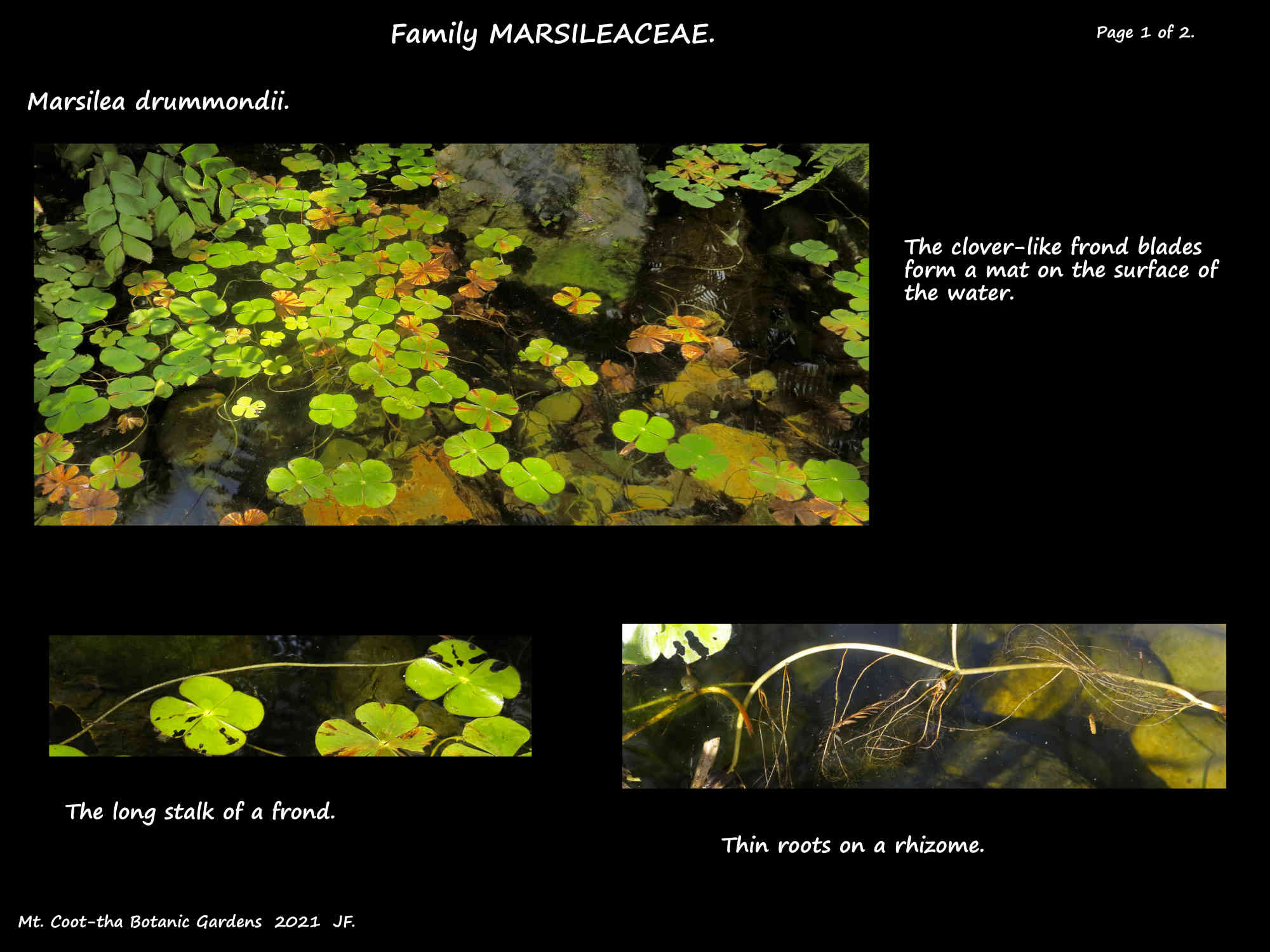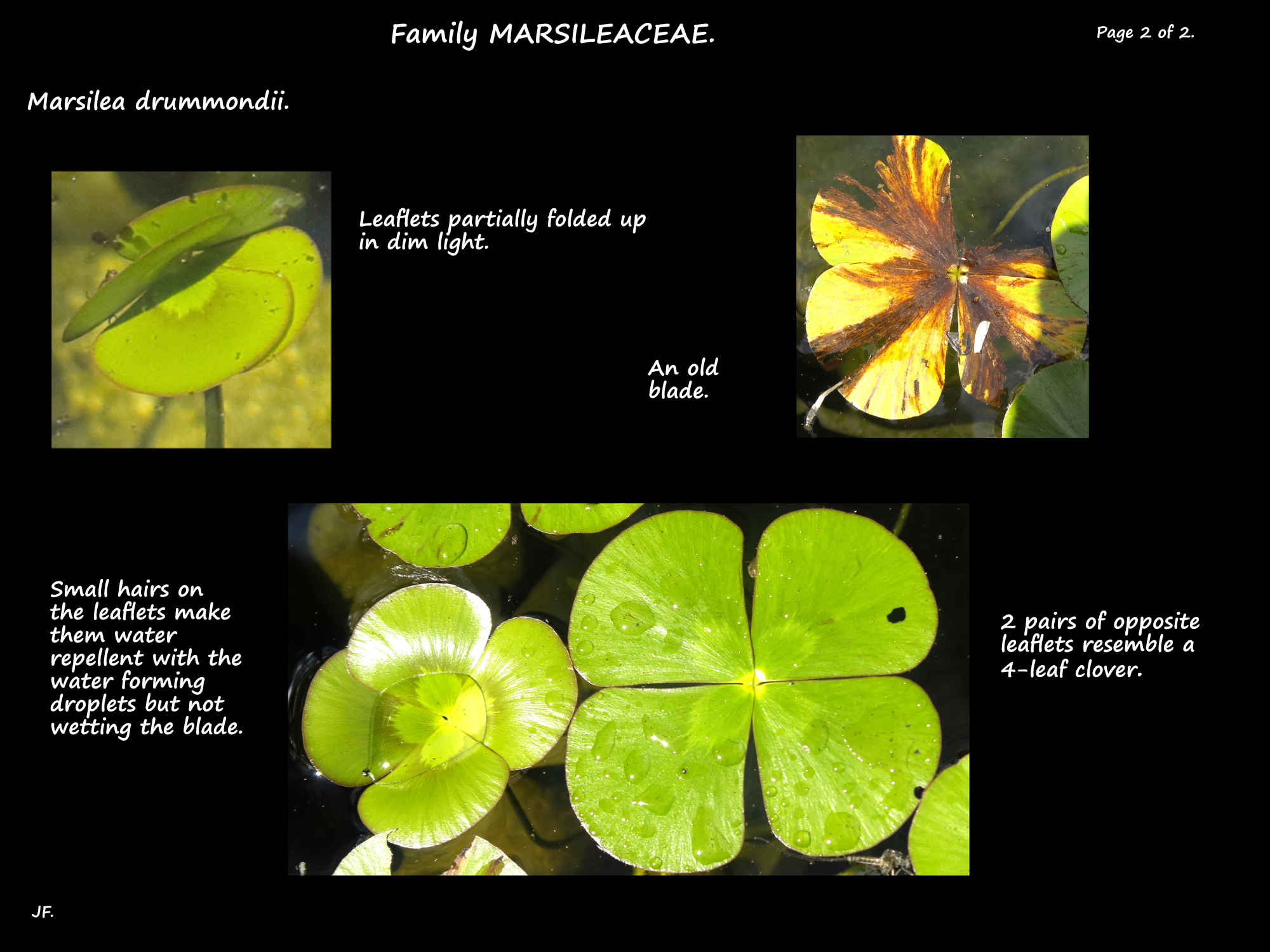Marsileaceae.
Division Polypodiophyta > Class Polypodiopsida > Order Salviniales.
Marsileaceae has 60 to 75 species of which 6 are endemic to Australia.
Marsilea drummondii is commonly known as Nardoo or Water clover.
Found over much of Australia including the dry inland areas it is the most widespread of the Marsilea here.
It is an aquatic fern whose sporocarps (spore capsules) can survive for decades in dry conditions.
It will grow in areas of still or slow moving water.
Roots on the rhizomes anchor the plants to the mud.
Each frond consists of a long stalk with a circular blade that resembles a 4-leaf clover.
The blades are initially coiled like a typical fern fiddlehead.
The circular blade consists of 2 pairs of oppositely arranged, wedge-shaped leaflets.
The blades are sometimes held above or under the water but usually float on the surface where
they form large green mats.
The leaflets have fine hairs which (like Maidenhair ferns) make them water resistant.
The leaflets are sensitive to light and fold up in the dark.
Instead of having a single type of spores on the underside of the leaf blade as in most ferns Marsilea produce
their spores in special structures called sporocarps.
These are a modified leaflet that develops on a stalk from the leaf axils along the rhizome.
The stalk is up to 5 cm long and the sporocarp is up to 1 cm long.
The tough sporocarp is what allows the fern to survive decades of drought only rupturing to release
the spores when conditions are suitable.
Each sporocarp contains rows of sori each of which has megasporangia (producing female megaspores) and
microsporangia (producing male microspores).
In suitable conditons (water) the sporocarp ruptures exposing the sporangia.
In other ferns the spores form macroscopic leaf-like prothalli which hold the archegonia and antheridia.
Marsilea does not produce a leaf-like prothallus.
Instead the archegonia (each producing one egg) and antheridia (producing a number of sperm) form inside
the respective spores.
Released sperm swim to, and feritilise an egg leading to the formation of a new plant.
J.F.



